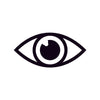Have you ever had a mysterious lump on the eyelid and ever wondered what it could be. The pea-sized lump that seem to remain for weeks despite your best efforts to be rid of it.
What you may have is a Chalazion.
WHAT IS A CHALAZION?
A Chalazion is usually a painless bump or nodule inside the upper or lower eyelid. The chalazion is caused by a blockage in one of the tiny meibomian glands of the upper and lower eyelids. The oil these glands produce helps to moisten the eyes.
What is the difference between a stye and a chalazion?
The primary difference between a stye and a chalazion is the cause. A stye usually forms close to the edge of the eyelids and it is a red sore lump. Stye is usually caused by an eyelash follicle which has become inflamed. A stye can also come up inside the eyelid making it an internal hordeolum.
Chalazion on the other hand is caused when an oil producing gland becomes swollen and oil clogs up the opening. In contrast to a stye, this is typically slow developing and is located further from the eyelids edge than a stye and is usually larger.


